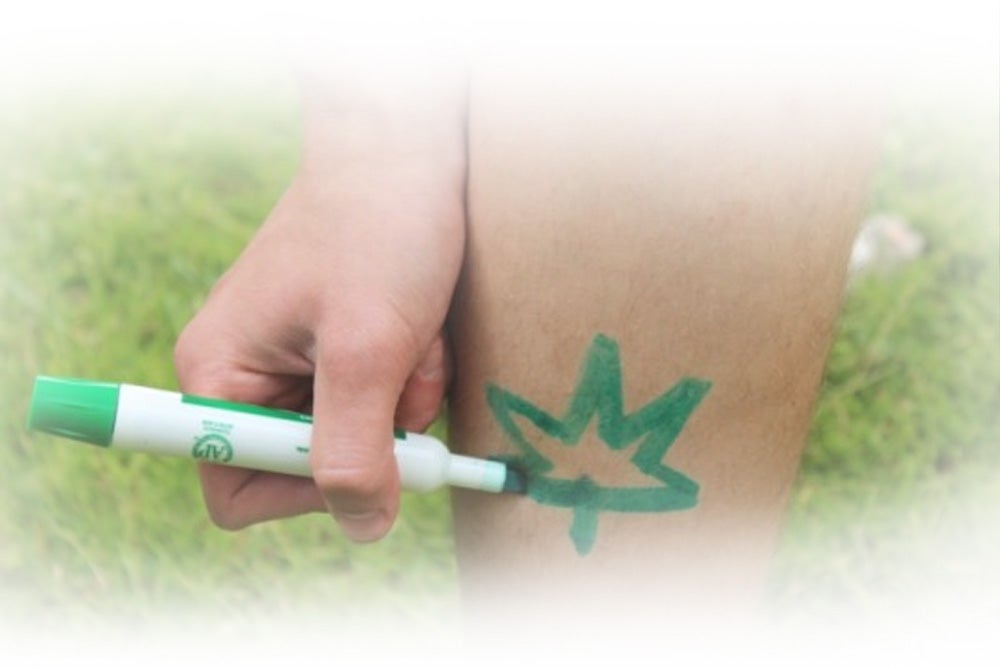
Suncayr, a student project, wins James Dyson Award
Suncayr, an easy-to-use marker that indicates when sunscreen needs to be reapplied

Suncayr, an easy-to-use marker that indicates when sunscreen needs to be reapplied
By Carol Truemner Faculty of EngineeringIf five nanotechnology engineering students have their way no one would suffer from a sunburn ever again.
Andrew Martinko, Derek Jouppi, Rachel Pautler, Hayden Soboleski and Chad Sweeting created Suncayr, an easy-to-use marker that indicates when sunscreen needs to be reapplied. Their product is a winner according to international competions. In November 2014, the Suncayr team were the first Canadians to capture a James Dyson Award. In March 2015, Suncayr also won the top innovation design competition prize in this year’s Canadian Engineering Competition that attracted over 170 students from across the country.
The fourth-year students came up with the idea for Suncayr while they were brainstorming for their nanotechnology engineering Capstone Design project.
“We needed to find a problem to solve for our project,” Martinko explains. “The statistics for skin cancer are pretty frightening and while sun screen works, you still get burned a lot. Coming up with a solution really resonated with the group and others as well.”

According to Jouppi, connecting with Nasser Abukhdeir, a Waterloo chemical engineering professor who is now the team’s faculty advisor, was critical in the development Suncayr. “He saw our passion for entrepreneurship, and swiftly put us on the right track researching the core technology behind Suncayr,” Jouppi says.
Suncayr received financial support from Waterloo Engineering’s Engineer of the Future Trust and the Faculty’s Enterprise Co-op program. Work on the product quickly moved ahead when Martinko and Jouppi spent last semester as part of E Co-op offered through the Conrad Business, Entrepreneurship and Technology Centre.
“Time spent in the program was really worthwhile and provided us with a great base to work from,” Martinko says.
For Jouppi choosing to pursue a degree in engineering came naturally.
“I love solving problems – Rubik’s cubes, puzzle games, you name it,” he explains. “The field of nanotechnology engineering has so much to figure out that I couldn’t resist becoming involved.”
Since being named the 2014 James Dyson Award runner-up in 2014, Suncayr has garnered considerable international media attention, including from CBC’s The National. The students have also been contacted by a couple of distributors about potential partnerships.
Martinko, Jouppi, Pautler, Sweeting and Soboleski are continuing to develop their product that will be showcased at the nanotechnology engineering Capstone Design Symposium to be held in March. After they graduate this spring, they will work on the manufacturing end of Suncayr with the goal of having their product on store shelves by summer 2016.
Martinko says the plan right now is to price Suncayr between $10 and $15 so that it’s affordable for the average consumer.
“Our ultimate goal is to bring it to the market and reduce skin cancer by having everyone use sunscreen much more effectively.”


Read more
Waterloo researchers develop techniques modelled on the human brain to improve how self-driving cars work

Read more
Waterloo welcomes emerging postdoctoral scholars to receive funding from Provost fellowship programs

Read more
Innovative device could power electronics with your body movements while you use them
Read
Engineering stories
Visit
Waterloo Engineering home
Contact
Waterloo Engineering
The University of Waterloo acknowledges that much of our work takes place on the traditional territory of the Neutral, Anishinaabeg, and Haudenosaunee peoples. Our main campus is situated on the Haldimand Tract, the land granted to the Six Nations that includes six miles on each side of the Grand River. Our active work toward reconciliation takes place across our campuses through research, learning, teaching, and community building, and is co-ordinated within the Office of Indigenous Relations.